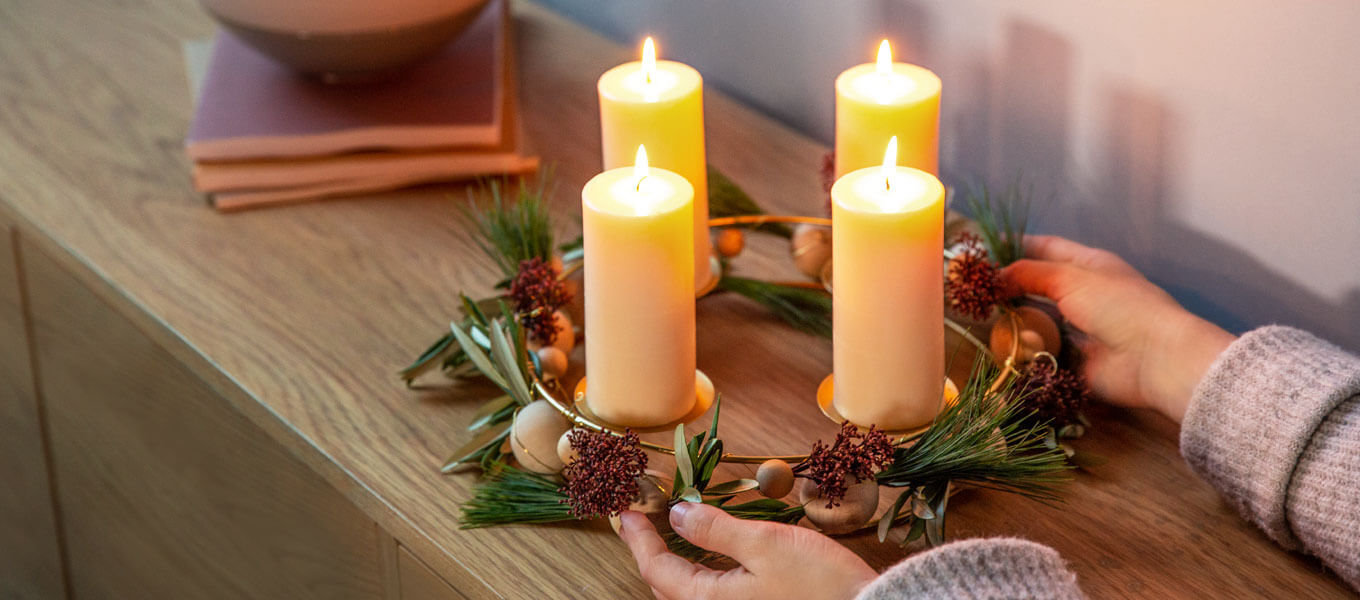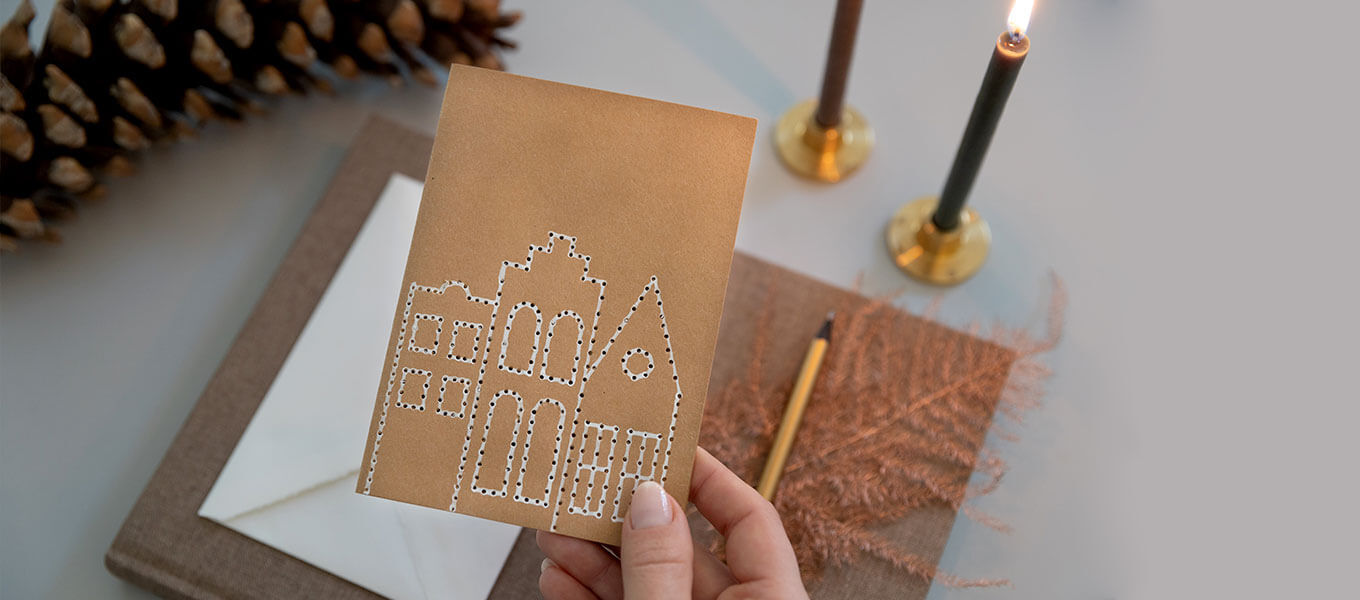
Make your own Christmas card – perforated Christmas card
Would you like to make a special Christmas card this year? Then we have a wonderful DIY idea for you that you can easily realise with our free template. Our DIY Christmas card is not only suitable for adults, but you can also make the Christmas card with your children. The great thing about this unusual Christmas card? Not only is it a wonderful Christmas greeting, but the recipient can also display the card as a beautiful Christmas decoration. Simply place an LED tealight behind the unfolded DIY Christmas card and the candlelight will shine gently through the prickled holes in the row of Christmas houses. Prickling is an old handicraft technique according to Friedrich Fröbel. It involves pricking motifs using a pricking needle and a felt base, i.e. making holes on the lines of motifs using a blunt, thick needle. The technique has become very popular again in recent years and is also ideal for making Christmas cards with children. The almost meditative handicraft work is just the thing for the sometimes so busy pre-Christmas period and delights adults and children alike.
Materials
- Folding card blank or kraft cardboard in DIN A5 format
- Prickle needle (alternatively a thicker embroidery needle)
- Felt base (alternatively a thick cardboard)
- White marker
- scissors
- masking tape
- Ruler or set square if necessary
- Template for Christmas card with house motif
Step-by-step instructions

Step 1: Print out and cut out the template
In the first step, you can print out our free PDF print template for your DIY Christmas card with wintry houses on your printer in A4 format. Then cut them out along the bottom edge of the houses and place them on your folded card so that the houses are centred on the front of the card. Then secure with some masking tape so that nothing slips.
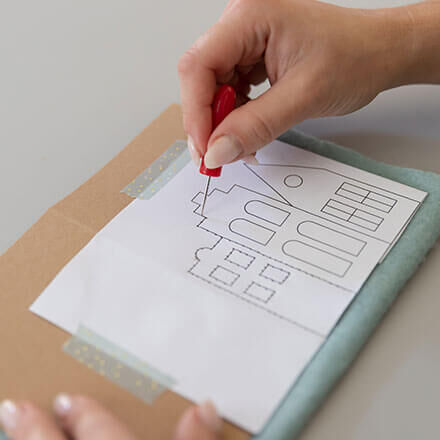
Step 2: Crimp the lines
Now the tinkling of the Christmas card begins. To do this, lay the card unfolded (!) on the felt base (double it if necessary) and prick holes at regular intervals of around 4 to 5 mm on the lines of the winter houses using the pricking needle. It always makes sense to pierce the corners of a house or window first, for example, and then distribute the other holes. The more evenly spaced the holes, the more beautiful the finished DIY Christmas card will be.
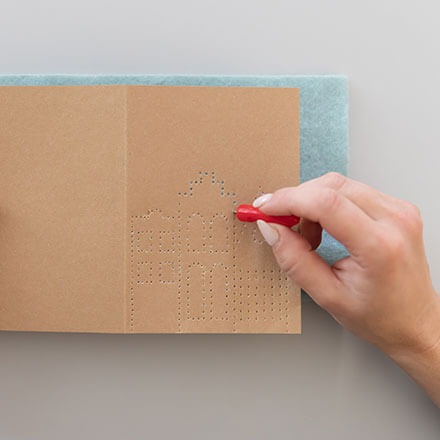
Step 3: Pierce the dots again
To make the dots nice and large and allow even more light through later, we pierced the dots on the DIY Christmas card again. To do this, remove the paper template, hold the card in the air and pierce all the holes again. Pierce the prickle needle all the way through. Advantage: You can also remove any small pieces of paper left over from the print template.
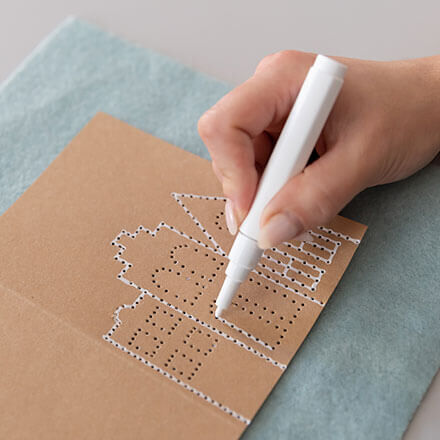
Step 4: Trace the lines
Finally, trace the pierced lines with a thick, opaque white marker. If you like, you can also work with a ruler to make it particularly neat. This makes it super easy to create Christmas cards in no time at all.
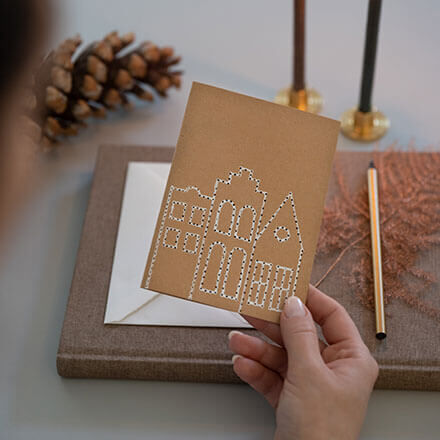
Done!
Frequently asked questions about Christmas cards:
How can you design a Christmas card?
There are lots of craft ideas and techniques for unusual Christmas cards. As with our idea, you can print various Christmas and winter motifs, such as a fir tree, on the Christmas card. As an alternative to tracing the lines, you can of course also embroider them with a beautiful yarn. Christmas family photos and beautiful Christmas motifs are also perfect for personalised Christmas greetings.
Where does the custom of Christmas cards come from?
Sending Christmas cards is a very recent custom and gradually replaced the time-consuming writing of Christmas letters. Nowadays, traditional Christmas letters are often replaced by creative and unusual Christmas cards, in which only short Christmas greetings are sent.
In which country did the first Christmas card appear?
The first Christmas card was commissioned in Great Britain by Sir Henry Cole from London.
In which year were Christmas postcards first introduced?
The first Christmas card was printed in 1843, but was still very expensive. From around 1870, Christmas cards became affordable for the general public thanks to new printing techniques. In Germany, however, it took until after the First World War for Christmas cards to gradually replace the greetings cards that had been sent until then.















